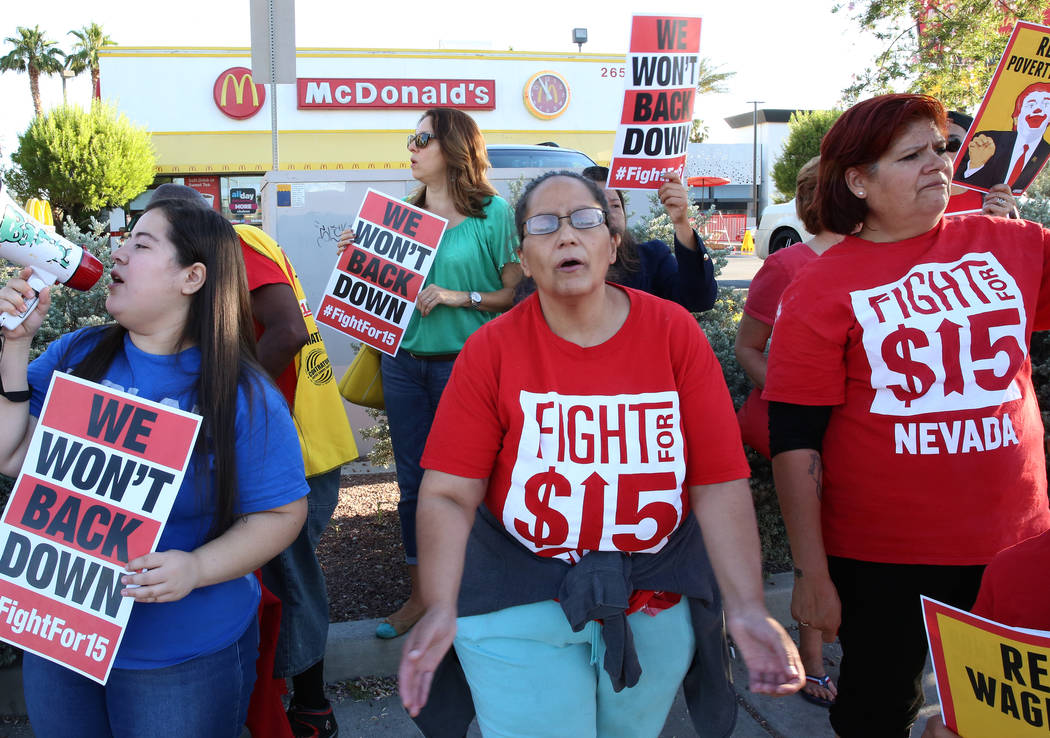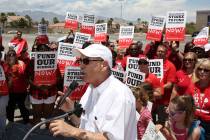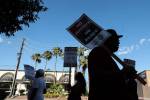EDITORIAL: Minimum wage job losses? Nothing to see here, folks
On June 22, CNBC reported that McDonald’s shares hit an all-time high, with Wall Street expecting sales to increase from new digital ordering kiosks that will replace cashiers in 2,500 restaurants. One day later, The Associated Press published a story under the headline, “Summer jobs are becoming a lost opportunity for teens.”
These two stories would seem to have one major common thread: both relate to the minimum-wage debate in cities and states around the country. Yet if you punch the Ctrl-F function on your keyboard and perform a search for “minimum wage,” it doesn’t come up in either story.
The AP report states that teenagers are more likely to be enrolled in summer school, doing volunteer work or hanging out with friends. The article deftly avoids touching the third rail of what’s really going on here — minimum wage hikes are killing the youth job market — but does come close: “For many, not working is a choice. For some others, it reflects a lack of opportunities where they live, often in lower-income urban areas: They sometimes find that older workers hold the low-skill jobs that once would have been available to them.”
CNBC’s report noted that McDonald’s has plans to roll out mobile ordering across 14,000 locations — including those 2,500 with digital ordering kiosks — by the end of this year, part of the restaurant chain’s “Experience of the Future.” That experience is going to include far fewer teenage workers, although a McDonald’s spokesperson told CNBC the kiosks would not serve as labor replacement. Sure.
Later in the week, the University of Washington released a study on Seattle’s move to a minimum wage of $15 an hour. The Seattle Times reported that in April 2015, the minimum wage went from $9.47 to $10 or $11, depending on business size, benefits and tips. Since then, that range has adjusted twice and now stands at $11-$15, and will cap out at $15 for all workers in 2021.
But rather than improving economic outcomes for low-wage workers, Seattle got a harsh lesson in economics. As the Times noted, the study concluded that Seattle’s pay floor is boosting wages for a range of low-paid workers, but is also causing those workers as a group to lose hours. The second jump, in January 2016, raised the wage to a range of $10.50 to $13; however, the 3-percent pay boost compared with 2014 wages was more than offset by a 9 percent reduction in hours worked. For workers, that amounted to an average loss of $125 a month per job.
Further, the University of Washington study estimated Seattle has 5,000 fewer low-wage jobs than it would have had without the minimum wage increase.
That’s how you get digital ordering kiosks at McDonald’s. That’s how summer jobs become a lost opportunity for teens. Nevada needs to learn a lesson from these misguided minimum-wage laboratories, and see to it that young people in the Silver State always have opportunities to get on that critical first rung of the job ladder. Their “Experience of the Future” depends on it.




























